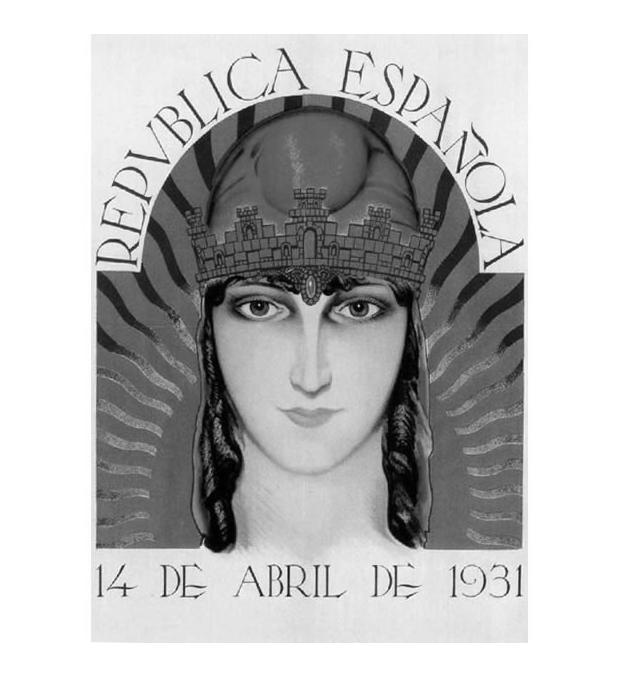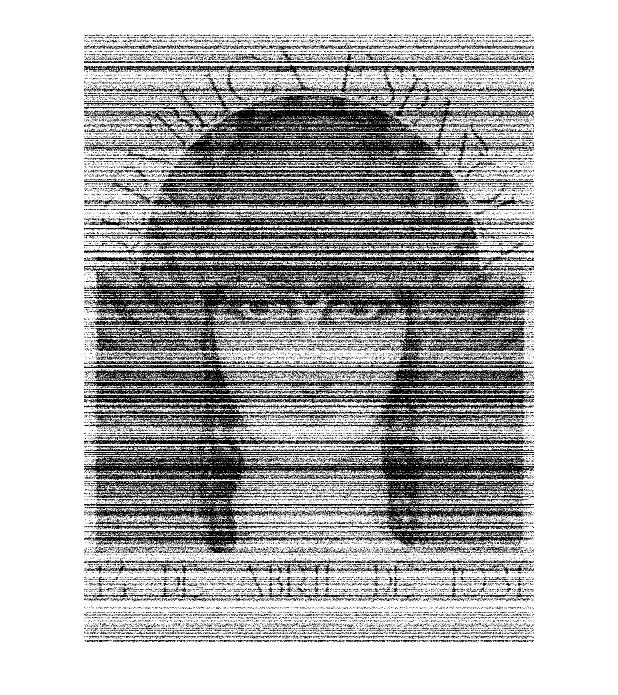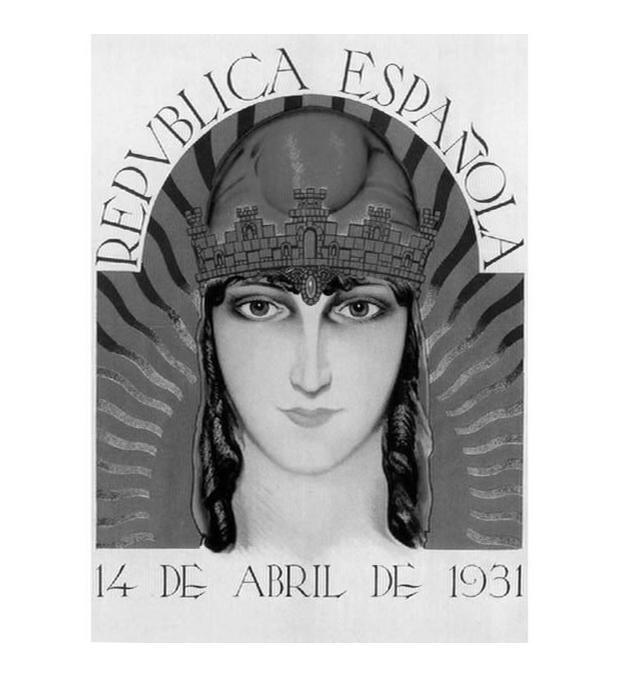Here we deal with an image of a poster in memory of the
Spanish Second Republic shown in the first
picture of Fig.
2. This image is an
array of

pixels that we have processed row by row.
Each row is a vector

,

The image is affected by structured noise produced when random noise
passes through a channel characterized by a given matrix

having

columns and

rows.
The model for each row

of the noisy image is
where each

is a random vector in

.
The image plus noise is represented
in the middle graph of Fig.
2.
In order to denoised the image we consider that every
row

is well represented in a subspace

spanned by discrete cosines.
More precisely, we consider

for

, where
The space of the noise is
spanned by the

vectors in

corresponding to the columns
of the given matrix

.
The image, after being filtered row by row by the
oblique projector onto

and along the space of the noise,
is depicted in the last graph of
Fig.
2.
Figure 2:
Image of a poster in memory of
the Spanish Second Republic (first picture).
Image plus structured noise (middle picture).
The image obtained from the middle picture by
an oblique projection (last picture).
|
|







